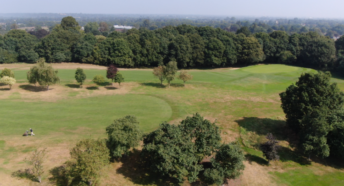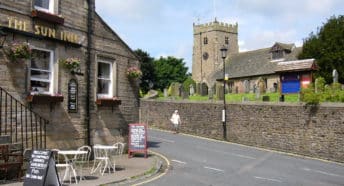‘No need to build on Berkshire’s countryside’
Local councils in Berkshire should NOT be planning to build thousands of new houses in the countryside
Local authorities in Berkshire should not be planning to build thousands of new houses in the countryside, Green Belt or Area of Outstanding Natural Beauty, and should urgently revise the housing numbers in their Local Plans, according to the Berkshire Branch of the Campaign to Protect Rural England (CPRE).
Latest research shows that there are already more than enough brownfield (previously developed) sites in Berkshire to meet local housing needs, without the need to build on any farmland or countryside. CPRE also points out that the housing targets currently used by local councils are no longer binding on them, due to a recent change of government policy.
Nationally, throughout England, there is enough brownfield land to build 1.2 million new homes, but only 45% of brownfield sites have planning permission for housing and even where permission has been granted developers are slow to build. This leaves 550,000 homes with planning permission still awaiting development.
In Berkshire, says CPRE, we have 359 such sites across the county, which would be sufficient to build at least 21,000 houses. These sites have been logged by local councils in their Brownfield Registers, and yet several of Berkshire’s councils are still allocating large areas of countryside including Green Belt open spaces and farmland for housebuilding.
For example, Bracknell Forest Council has 22 brownfield sites on its register, 11 of which already have planning permission for housebuilding. The amount of brownfield land totals 40.75 hectares in the district. This, says CPRE, is sufficient for 2,608 new houses; 1,580 already have planning permission. The borough of Windsor & Maidenhead has 32 brownfield sites registered, covering 72 hectares, enough to build 1,808 new homes.
Reading Council has 140 brownfield sites, 126.35 hectares, sufficient for 10,124 houses – the largest housing capacity in the county. Even in rural West Berkshire, there are as many as 53 brownfield sites totalling 46.54 hectares, which CPRE estimates would allow building of 2,837 new homes without the need to build on any farmland or countryside at all. But in all the areas CPRE researched, most brownfield sites either had no current planning permission for housing or, if they had permission, homes were not being built fast enough.
Following the statement last week by Levelling-Up & Communities Secretary Michael Gove that the Government no longer intends for its housing targets to be mandatory, merely ‘advisory’, and committing to allow communities a bigger say on how many new houses are to be built in their areas, and where these houses should be built, CPRE Berkshire believes that local councils in the county should look again at the housing numbers in their Local Plans.
Greg Wilkinson, Chairman of CPRE Berkshire commented: “When the housing numbers are no longer mandatory, and when there is already considerable potential for new homes to be built on brownfield sites, it is clearly wrong for local councils in our county to be offering up vast swathes of countryside to developers, especially Green Belt land and protected landscapes such as AONB.
“Despite developers pretending that planning constraints such as Green Belt are the obstacle to building the homes that people need, it is apparent from the latest CPRE report that this is not the case. The problem is that developers are just not interested in building houses on brownfield sites.”
Greg also pointed to the recently published report by the House of Lords committee on land use in England which had called for a national strategy and framework to make more efficient use of available land in town and country and to achieve a better balance between development and the environment.
CPRE’s ‘State of brownfield’ report calls for a range of measures to protect green fields, farmland and countryside, while boosting the development of social and truly affordable homes in areas where it is most needed. Previous research has shown that development of the highest quality farmland has soared 1,000-fold in 10 years, while brownfield sites wait for regeneration.
Meanwhile, the demand for social housing is growing six times faster than the rate of supply in rural areas and, at current rates, the backlog of low-income families needing accommodation would take over 120 years to clear.
-ENDS
Analysis by National CPRE of 344 local authority brownfield land registers, 143 of which have been updated since the previous analysis (as of November 2022) revealed the current identified capacity for homes on brownfield land stands at 1,232,592 new dwellings. Of this housing capacity on brownfield sites, CPRE found that 45%, or 555,874, currently have planning permission for housebuilding.








